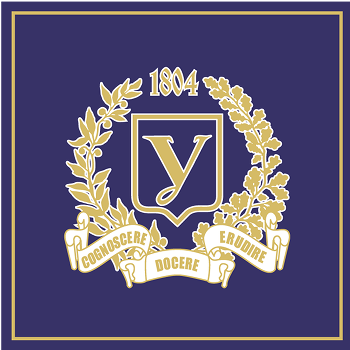Музыченко О. С.
- 2018-30
Structural Analysis of Higher Aquatic and Coastal-Aquatic Plants of Vyzhivka River
Purpose. Determination of the species composition and determination of the systematic and ecological structure of the aquatic and coastal-aquatic flora of the Vyzhivka River. Methods: morphological, botanical, comparative ecology, statistical. The ecological classification of species was given according to V. Papchenkov. Results. Flora of the Vyzhivka River has 36 species of higher aquatic and coastal-aquatic plants belonging to 31 genus, 20 families, 14 orders, 3 classes (Equisetopsida, Liliopsida and Magnoliopsida) and 2 divisions (Equisetophyta and Magnoliophyta). The Magnoliophyta division includes 35 species, or 97,22% of the total number of species. The species composition is dominated by representatives of the class Liliopsida. Up to 4 families of flora (Alismataceae, Hydrocharitaceae, Cyperaceae, Lemnaceae) own 41,66% of all species. The ecological structure of aquatic and coastal-aquatic plants of Vyzhivka river includes four ecotypes. The first place in terms of the number of species is occupied by hydrophytes, which amount 33,33% of the total number of species, hygrohelophytes are represented by 30,56%. The share of helophytes and hygrophytes, respectively, is 19,44% and 16,67%. Conclusions. As a result of the conducted research, the species composition and features of the ecological structure of the higher aquatic and coastal-aquatic flora of the Vyzhivka River were established. The greatest species diversity is characteristic for the plot number 1 – 24 species. In the second section, 21 species of aquatic and coastal aquatic plants were identified. The smallest number – 18 species, is in the third area. The anthropogenic factors have the greatest impact on biodiversity: the presence of a drainage system, straightening of the riverbed, the use of the river basin for agricultural needs, the discharge of insufficiently treated sewage of housing and communal services.
- 2018-1-2-:29
Dynamics and Ontogenetic Condition Populations Galanthus Nivalis L. and Allium Ursinum L. in National Natural Park «Kremenet’s Mountains»
Purpose. Study of the dynamics and ontogenetic condition of Galanthus nivalis L. and Allium ursinum L. in the localities of the National Natural Park «Kremenet’s Mountains». Methods. Field, statistical, analytical. Results. The present state of the localities Galanthus nivalis L. and Allium ursinum L. in the territory of the National Nature Park «Kremenet’s Mountains» was described. Affiliation of each studied populations to a certain category was determined, according to classification of T. O. Rabotnov (invasive, normal, regressive). Ontogenetic spectrum of the localities species were constructed and analyzed in the aspect of their belonging to one of the types: left-side, centered, right-side. Proportion of plants of different ontogenic states in the investigated localities was determined. On the basis of the received results there were made conclusions on the ontogenetic structure of Galanthus nivalis L. and Allium ursinum L. localities in the conditions of the National Nature Park «Kremenet’s Mountains» are made. Conclusions. In the National Nature Park «Kremenet’s Mountains» for Galanthus nivalis L. and Allium ursinum L. there are three periods and six age classes. It was established that most of populations were full nominated of normal type, and are characterized by monomodal, left-sided age spectrum with maximum on individuals of pregenerative period. In the studied localities, there were no sprouts, but the presence of juvenile specimens indicates the fullness of their age spectrum.
- 2017-1-2-:27
Nature-reserve fund Kiverzivsky district of Volyn region
One of the strategic tasks of the state environmental policy of Ukraine for the period up to 2020 is to increase the area of the national econet, which should take place by expanding existing and creating new objects of the nature reserve fund, which is legally approved by laws and national programs in the field of development of the ecological network And a reserved case. Purpose. The study of the structure and spatial distribution of protected areas and objects Кiverzivsky district of Volyn region, determining quality of nature reserve network. Methods. Comparative geography, mathematics, graphing, statistical, analytical. Results. The structure and spatial distribution of protected areas and sites of the area. The quality of the protected areas and territories assessed for coefficient of nature protection and insularization, an indicator of density, uniformity of distribution. Established landscape and geographical representation network of protected areas. The structure of reserved area is characterized by uneven distribution. Dominated facilities of less than 50 hectares, their portion of the total number is 70,59%. High іnsularization (0,36) points to significant fragmentation of protected areas and their area of environmental instability. Directions improving territorial structure protected area network. Conclusions. For the further successful development of the conservation area on the territory, the next step should be the completion of the development of schemes for the formation of the ecological network of natural nuclei and ecocorridors of national importance in order to ensure the possibility of natural migration and distribution of plant and animal species, preservation of valuable natural elements of the environment. Important role in ensuring reliable migratory biotic connections is given to the NPC "Tsumanska Pushcha".
- 2016-3-4-:26
State Population Lily of the Valley (Convallaria Majalis L.) in Conditions Sugrudy Kiverzivsky Forestry Volyn Region
Purpose. The study of ecological and biological and environmental features cenotic growth of C. majalis (L.) in terms of forestry suhrudy Kivertsi Volyn region. Methods. Field, biometrics, statistics. Results. Researched environmental growing conditions lily of the valley (Convallaria majalis L.) in conditions sugrudy Kiverzivsky forestry. The characteristic species as one of the dominate species of grass-bush tier. Installed forest floristic composition of plant communities featuring species.Analyzed the «age» and «ontogenetic population structure» on the basis of the determination ontogenetic spectrums and types of populations.Described the impact of lighting on morphometric parameters aerial organs of C. majalis L.: width and length of the leaf blade, the number of flowers and fruits. Conclusions. The sugrudy conditions of population C. majalis (L.) is not complete spectra that belong to normal and invasive types. The light level is not significantly affect the morphometric parameters of the leaf blade, flowering and fruiting, and the state of the population C. majalis (L.) and its development depends, first of all, on the internal rhythms ontogenesis and human impact.
- 2015-3-4-:24
Integral Assessment of Ecological Status of Surface Waters of the River Western Bug Within Volyn Region
With the use of monitoring information were calculated index modular and integrated environmental assessment of surface water quality of the river Western Bug and its tributaries for the years 2013-2014, defined class and category of water quality in the basin of the Western Bug.
Surface waters of the Western Bug and its tributaries correspond II - III class quality. Excess of pollutants recorded for ecological-sanitary indicators (NH4+, NO2-) and specific substances toxic effects (Fe).

